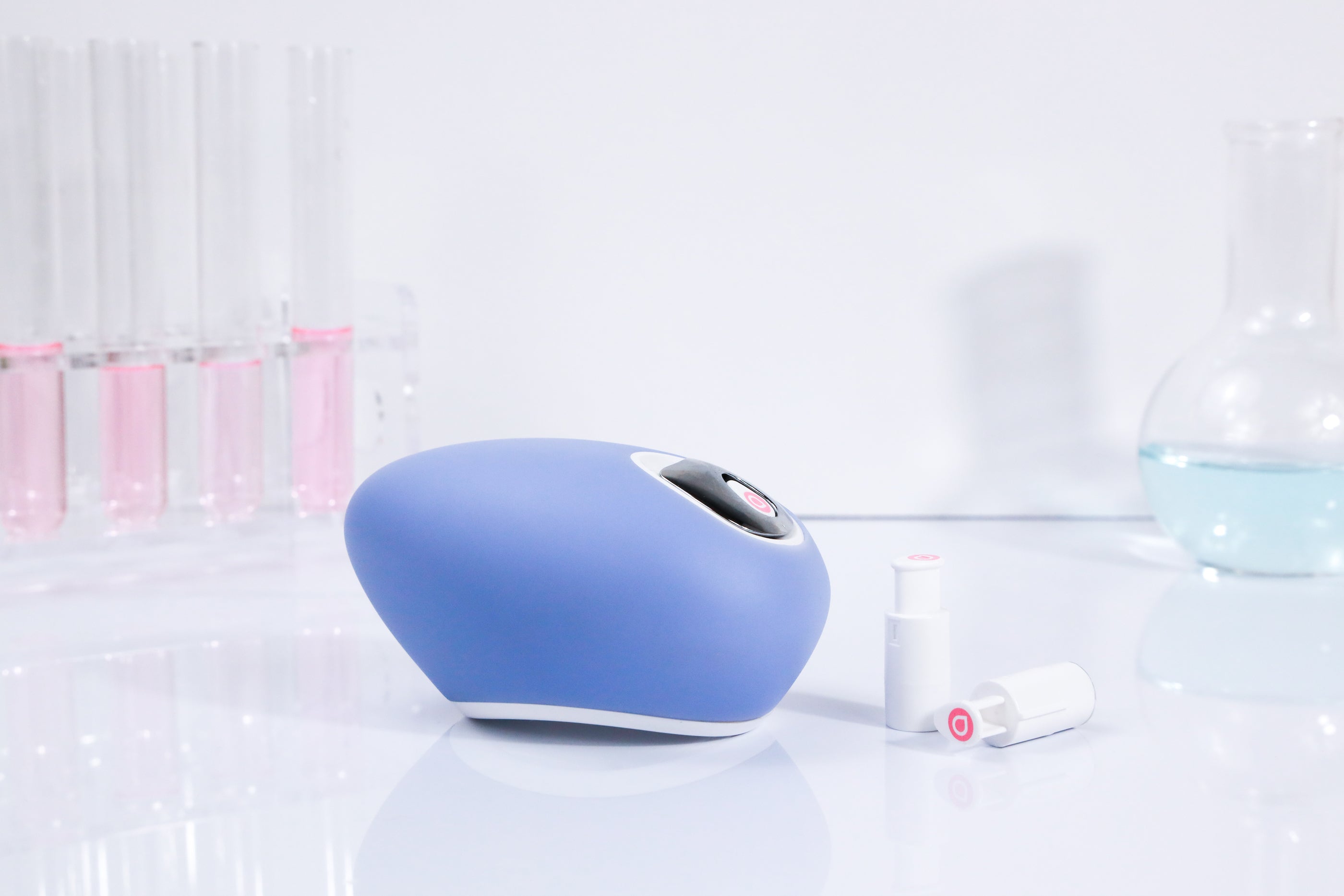Retinol has been known for years as one of the most effective dermatologist-recommended blemish- and age-fighting actives in the skincare world. However, concerns about dosage and skin sensitivity have caused wariness and uncertainty about this powerhouse ingredient. The Droplette Micro Infuser Device addresses those issues, allowing you to experience classic retinol in a safer, gentler way—and still reap all of its amazing benefits.
Let’s take a closer look at the history of retinol, and how to get the best results from this skincare superstar.
Retinol in Skincare: Where Did it Come From?
Retinol is not even close to new: It was discovered in the 1930s by Swiss chemist Paul Karrer, who earned a Nobel Prize for his work. But it took 30 years for scientists to figure out how to apply it to dermatology, as the compound degrades when exposed to light and oxygen.
Once researchers metabolized retinol into its more stable (and more active) cousin, retinoic acid, the FDA finally approved its usage in medicine in the 1960s. Then, in 1971, Retin-A (a brand name for retinoic acid/tretinoin) received FDA approval as a prescription for acne—and its results were even better than expected. Dermatologists began noticing that in addition to reducing breakouts, it also helped minimize wrinkles, fine lines, and hyperpigmentation, so the ingredient caught on like wildfire.
Why Did Retinol Skincare Fall Out of Favor?
Retin-A became hugely popular, but many patients started to overindulge in this potent ingredient and learned that more isn’t always better. Usually, due to improper dosage and frequency of application, users’ skin became irritated, making it scaly, red, and painful.
This occurred because although retinol is capable of penetrating the skin when formulated as a lotion or topical serum, it does so via diffusion. That means the vast majority of the ingredient ends up on the top layer of the skin, resulting in a very high dose on the surface and almost none in the layers below. This high surface dose is a major cause of dryness and irritation. On top of that, retinol makes skin even more sensitive to UV exposure, and not every patient was diligent about using sunscreen during treatment.
Understandably, all of this caused retinol to experience a decrease in popularity as other ingredients began garnering more attention in the prestige beauty arena.
Retinol’s Resurgence
Despite its challenges, dermatologists have maintained their belief in responsible retinoid use and its many benefits. Additionally, scientific advances have helped solve common issues: chemists have invented ways of using retinol (the parent ingredient) instead of its acidic form to improve skin tolerance, and now use microencapsulation to ensure stability. All of this helped bring retinol back into the spotlight starting around 2010—and its undeniable results mean that this ingredient is here to stay.
The Best Way to Apply Retinol
We know this ingredient has amazing potential, but to really make the most of it you need to apply it properly—and traditional topicals just won’t cut it.
Droplette is revolutionizing retinol use with our micro-infusion technology.. When you administer retinol through the device, it’s transformed into the tiniest micro-mist particles possible over broad surface areas, for consistent treatment of aging skin. The advantages of this method are clear: hygienic capsules that contain stable actives, low but effective concentrations to diminish irritation, deep ingredient delivery for optimized performance, and no ingredient “clumping” for a safe and reliable outcome every time.
Retinol Before and After Pictures

It’s clear that retinol is worth the hype, but it all depends on how you use it. With Droplette’s breakthrough delivery approach, you can finally enjoy a skin-renewing retinol treatment without any of the downsides. At Droplette, we’re not looking to reinvent skincare ingredients—just the way they work for you.


